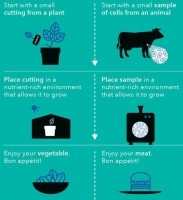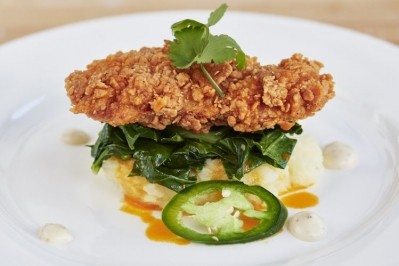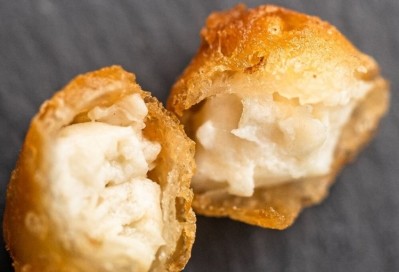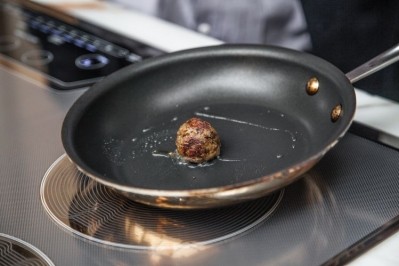SHIFT20: ‘Cell-based’ could be the best way to describe cell-cultured seafood on labels, suggests large consumer study
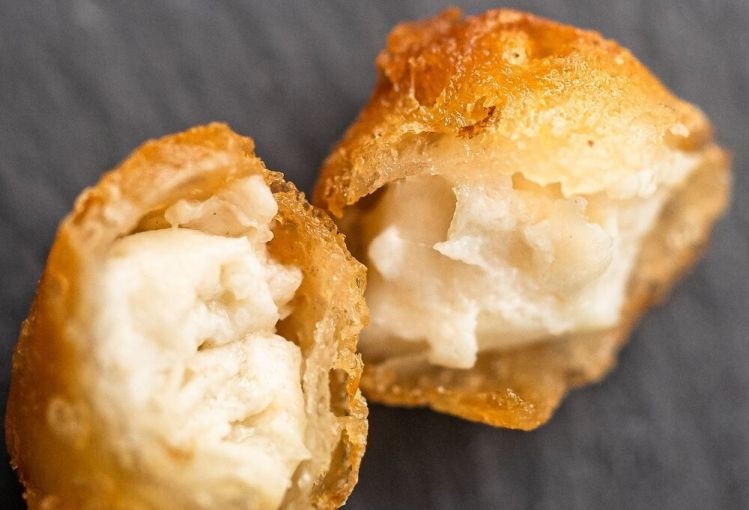
Speaking at a live webinar during SHIFT20, the virtual IFT show on Tuesday, Dr Bill Hallman, department chair, human ecology at Rutgers University and former chair of FDA’s risk communications advisory committee, unveiled findings from an online study of 3,186 Americans conducted February 12-March 3.
The study was funded by cell-based seafood startup BlueNalu (which had no control over the methodology or final text of the study, which will shortly be published* in the peer-reviewed Journal of Food Science).
The study was designed to test consumer perceptions of seven common or usual names (something the FDA requires on all of the food products it regulates) using images of realistic packages of three types of seafood (shrimp, tuna, salmon) that a consumer might encounter in a supermarket. Key criteria included consumers’ ability to distinguish between seafood grown from cells and the two types of seafood currently available: wild-caught, and farmed.
‘More than half [of consumers surveyed] assumed ‘cultivated’ meant farm-raised’
Seven names that have been widely used by industry, the media, and other groups were tested: Cell-based, Cultured, Cell-cultured, Cultivated, Produced using cellular aquaculture, Grown directly from the cells of …, Cultivated from the cells of…
(Terms such as ‘Lab-grown,’ ‘Synthetic,’ ‘Cruelty-free,’ ‘Clean’ and ‘Fake Meat’ were not tested as they could be perceived as disparaging – directly or indirectly - to cell-based or conventional products, or imply that the products might not be safe, healthful or nutritious.)
While there have been several consumer studies testing nomenclature for this new category, none have thus far rigorously examined whether – without help or additional information - consumers reading said terms on a food label could distinguish them from conventional products already on the market, a key requirement for coming up with a common or usual name, according to Dr Hallman.
‘Cultivated’ – a term that resonated the most with consumers in research conducted by Mattson with the Good Food Institute last year – performed particularly poorly in this respect, he said: “More than half [of consumers surveyed] assumed it meant farm-raised.”
In fact, he said, “'Cultured,' 'Produced Using Cellular Aquaculture,' and 'Cultivated' fail to differentiate these products from conventional seafood.”
In contrast, he added: “’Cell-Based’ and ‘Cell-Cultured’ both do a good job of signaling that the product is different from both ‘Wild Caught’ and ‘Farm Raised.’”
“The term ‘Cell-Based Seafood’ meets the regulatory requirements, is seen as an appropriate name, and performs as well or better than the other terms with respect to consumer perceptions and likely acceptance…”
Dr Bill Hallman, department chair, human ecology, Rutgers University
The next phase of the research will focus on testing the names ‘cell-based seafood’ and ‘cell-cultured seafood’
Ultimately, ‘Cell-Based’ outperformed ‘Cell-Cultured’ when compared to the conventional products with respect to initial and overall reactions to the products, perceptions of how good the products likely taste, interest in tasting, likelihood of purchasing and whether children should eat the products, he told FoodNavigator-USA after the webinar.
“The next phase of the research will focus on testing the names 'cell-based seafood' and 'cell-cultured seafood' using a representative population of 1,200 US consumers (so 600 will see 'cell-based' and 600 will see 'cell-cultured.’
“We will simplify the design to look only at the two names using a single product. I haven’t yet decided which type of seafood to test. This design will allow me to better detect potential differences between the names, and the representative sample will permit me to directly project the findings of the study to the US population of consumers.”
GFI will continue to use the word ‘cultivated' for the time being
Elizabeth Derbes is associate director of regulatory affairs at The Good Food Institute, which conducted some research on consumer-friendly terminology in the cell-based meat space with product innovation consultancy Mattson last year.
"Seafood grown directly from cells... isn’t on the market yet, so it’s exciting to get a glimpse into how consumers understand the names that the companies might use on their labels," Derbes told FoodNavigator-USA.
"For now, GFI will continue to use the word ‘cultivated’ to describe the broad category of meat, poultry, and seafood made directly from cells when we’re talking to general audiences. We think we have a compelling story to tell: We can make familiar foods by cultivating animal cells in a nourishing environment, just like we can help plant cuttings take root in a greenhouse, which provides warmth, fertile soil, water, and nutrients. That said, we don’t take the position that this word necessarily needs to appear on the label.
"We look forward to additional research to inform our views on how companies like BlueNalu can best communicate with their future customers."
Alliance for Meat, Poultry and Seafood Innovation: Terminology should be 'scientifically-based, accurate and meaningful to consumers'
The Alliance for Meat, Poultry and Seafood Innovation (a coalition of cell-based meat cos including BlueNalu, Memphis Meats, JUST, Finless Foods, and Fork & Goode) welcomed Dr Hallman's "thoughtful research."
A spokesperson added: "The use of terminology that is scientifically-based, accurate and meaningful to consumers is critical as we get ready to bring our products to market. This, and other types, of peer-reviewed research will be helpful for our industry and for the U.S. Department of Agriculture and the Food and Drug Administration as they think through the regulatory framework pertaining to labeling and transparency.”

‘There was a need for independent, peer-reviewed research’
Regulators will ultimately decide how companies in the nascent cell-based meat/seafood industry must label their wares, but over the past couple of years, stakeholders have sought to get ahead of the debate (and the ‘lab-grown’ headlines) by trying to come up with terms that might satisfy regulators and consumers without alienating the conventional meat/seafood industry, said BlueNalu president and CEO Lou Cooperhouse.
“There was a need for independent, peer-reviewed research reflecting what regulators would look for in a common or usual name.”
While the USDA will be responsible for the labeling of cell-based meat and poultry products and the FDA is in charge of seafood (neither agency has yet opined on a favored term), finding terminology that could work in both sectors would be ideal, he told FoodNavigator-USA.
“I am assuming that the FDA and the USDA would prefer that too, as right now there are so many terms out there and it’s confusing for consumers.”
BlueNalu aims to produce small quantities of product for a test launch in late 2021
BlueNalu – which recently raised $20m in a Series A round that will help fund a production facility in San Diego – aims to produce small quantities of cell-based seafood for a test launch in late 2021, said Cooperhouse.
While no one has yet produced commercial quantities of cell-based meat or seafood, a handful of startups have now secured funding to build pilot plants, which will finally take the technology from the theoretical to the practical realm, he said.
“What’s attracted a lot of investors is that they see not just a platform technology with a wide array of species without genetic engineering, but that we’re also putting the infrastructure in place for large scale production and distribution.”
BlueNalu is working with cell lines for multiple species including tuna, red snapper, and yellowtail amberjack, but is likely to launch with mahi mahi, he said. “We’ll have at least four species we could launch with.”
Different cell types (muscle, fat, fibroblasts) will be grown in separate bioreactors and then combined post-harvest and formed into shapes via a type of cold extrusion process, he said. “We’re doing this without the use of scaffolds, so that lends itself to a continuous process that’s key to our strategy of being totally focused on scale production.”
The economics of cell-based seafood production
Given the laundry list of problems linked to the seafood industry - from overfishing to inhumane slaughter, toxins, contaminants, pollution, plastic, fraud, mislabeling, illegal labor practices, habitat damage, bycatch and inconsistent quality and freshness – seafood is arguably an even more compelling place to start than beef if you're interested in cellular agriculture, he said.
While many startups in the cell-based field are starting out with cheaper processed products such as burgers and sausages, BlueNalu is focused on more premium products, which makes it easier to compete, he said.
As some fish cells can grow at room temperature (whereas cow or chicken cells need higher temperatures to grow), the energy inputs needed to cultivate them are also lower, he said.
Higher yields, lower food miles
And while seafood prices can be volatile, the overall trajectory is up, making the economic case for cell-based products steadily more compelling, he claimed.
“Cell-based products replace 7,000 miles distribution from point of capture to point of consumption, with 50% yield [for some wild-caught fish, for example], with a product that has 100% yield [no part of cell-based fish is wasted] from maybe 50 miles away [from the point of consumption].”
* Hallman, W. K., & Hallman, W. K. II (in press). An empirical assessment of common or usual names to label cell-based seafood products. Journal of Food Science. https://doi.org/10.1111/1750-3841.15351
According to Dr Hallman: “BlueNalu funded the research study. However, the funding was unrestricted and I was given full independence to choose the names to test, to design and carry out the study, and to report the results. The conclusions are my own. The paper will be published as an “open-access” article so anyone who wants to read it should be able to do so in a few days.”
